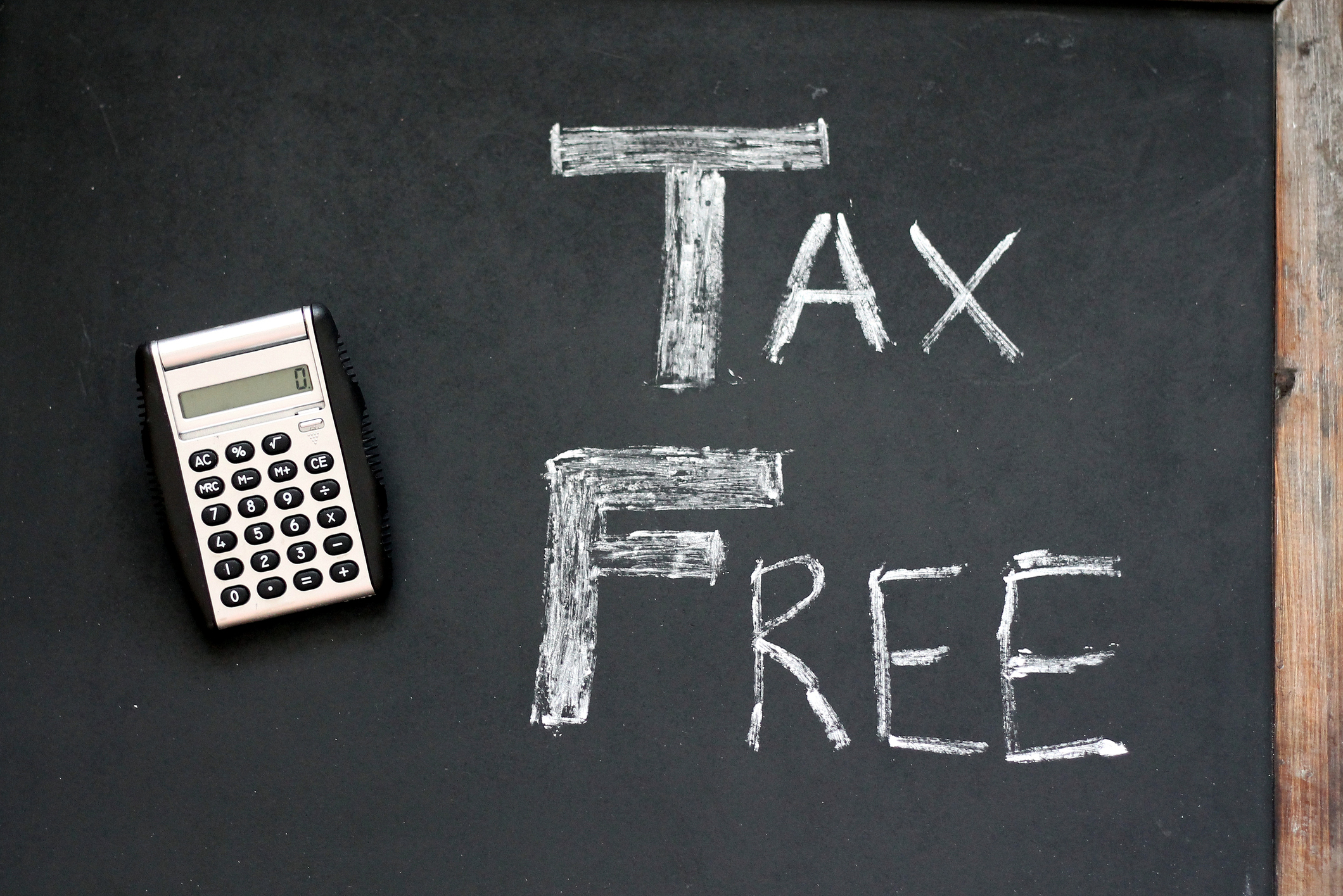How you could boost household income by £16k tax-free – five legal loopholes
Knowing your way around the tax system means you can take advantages of ways to keep more of your income tax-free


Families could boost their income by more than £16,000 without handing a penny of it to HMRC by taking advantage of five quirks of the tax system.
Frozen income tax thresholds – currently on ice until 2028 – mean more people are being pulled into higher tax bands, known as fiscal drag.
By the 2027/28 tax year, an additional 12 million people will be higher rate taxpayers, and a further two million will pay the additional rate of income tax, according to a Freedom of Information request by wealth manager Quilter in April.
MoneyWeek
Subscribe to MoneyWeek today and get your first six magazine issues absolutely FREE

Sign up to Money Morning
Don't miss the latest investment and personal finances news, market analysis, plus money-saving tips with our free twice-daily newsletter
Don't miss the latest investment and personal finances news, market analysis, plus money-saving tips with our free twice-daily newsletter
Considering there have also been big cuts to dividend allowances and increases in capital gain tax rates, it's easy to see why even higher earners are feeling the pinch.
But there are ways to keep more of your income tax-free that are well within reach for the average household and are fully sanctioned by HMRC – if you know your way around the notoriously complex UK tax system.
Laura Suter, director of personal finance at AJ Bell, said: “Many households are overlooking completely legitimate ways to earn tax-free income, simply because they don’t realise what’s available.
“These allowances and exemptions are designed to help people make the most of their money. A little bit of knowledge about how the tax system works can go a long way.”
How to generate tax-free income
1. Marriage allowance – up to £1,260
The marriage allowance can work for you if one half of the couple earns less than £50,270 a year and the other either earns less than £12,570 or doesn’t earn any money at all. It lets you transfer £1,260 of your unused personal allowance to your husband, wife or civil partner. That could save you up to £252 in the current tax year.
For example, say your income is £11,500 and your personal allowance is £12,570, so you do not pay tax.
Your partner’s income is £20,000 and their personal allowance is also £12,570, so they pay tax on £7,430 (their ‘taxable income’). This means as a couple you are paying income tax on £7,430.
When you claim the marriage allowance you transfer £1,260 of your personal allowance to your partner. Your personal allowance becomes £11,310 and your partner gets a ‘tax credit’ on £1,260 of their taxable income.
This means you will now pay tax on £190, but your partner will only pay tax on £6,170. As a couple you benefit, as you are only paying income tax on £6,360 rather than £7,430, which saves you £214 in tax.
It’s thought around two million couples are eligible for this tax break but not claiming it, and even those where one half of the couple is retired can claim.
“What’s even better is that you can backdate any claims for up to four years, assuming you were eligible in those years – which would get you a total of £1,260, including the current year’s claim,” Suter said.
You can claim it online directly through the government website, you’ll just need yours and your partner’s national insurance numbers plus some forms of ID. You can check if you’re eligible using the government’s calculator. Beware of scam websites that are mocked up to look like the government website but are actually imposters.
2. Trading allowance – £1,000
Everyone can earn up to £1,000 tax-free from side hustles or other money-making endeavours that are separate from their main job. The so-called ‘trading allowance’ means that if you earn £1,000 from property or trading income it will be tax free – if you’re a basic-rate taxpayer this will save you up to £200 a year, or £400 a year for a higher-rate taxpayer.
Suter said: “The good news is that if you earn less than £1,000 a year from your side hustle then you won’t usually need to fill out a tax return. Just make sure you keep track of any relevant paperwork proving your income in case HMRC asks for it later.”
If you earn more than £1,000 from your side hustle in a tax year you’ll still benefit from the tax break, but you’ll need to fill out a tax return to declare the extra income and pay any relevant tax.”
3. Rent-a-room scheme – £7,500
The rent-a-room scheme lets you earn up to a threshold of £7,500 per year tax-free from letting out furnished accommodation in your home. You can let out as much of your home as you want, and it will save you up to £1,500 a year as a basic-rate taxpayer or £3,000 a year if you pay income tax at 40%.
“You must be renting out a room (or multiple rooms) in your home, rather than a separate flat, and the room must be furnished. You can also use it if you run a B&B or guest house, so long as it’s in the same property you live in,” Suter said.
You don’t even need to own the home to benefit, you could be renting out part of your rental property – however, you’ll need to check that your lease doesn’t prohibit that. If you earn less than £7,500 a year from renting out a room you won’t need to fill in a tax return, but if you earn more than the tax-free limit you will.
4. Claim tax-free childcare – £2,000
You can get up to £500 every three months (up to £2,000 a year) for each of your children to help with the costs of childcare. This goes up to £1,000 every three months if a child is disabled (up to £4,000 a year).
If you get tax-free childcare, you’ll set up an online childcare account for your child. For every £8 you pay into this account, the government will pay in £2 to use to pay your provider.
You can get tax-free childcare at the same time as 15 or 30 hours free childcare if you’re eligible for both.
Suter said: “Not all parents will be eligible – they must both be working and each earning the minimum wage for 16 hours a week or more, but also earning less than £100,000 adjusted net income per parent.”
You can claim the money per child and use it up until 1 September following their 11th birthday. You’ll need to log in to your government gateway account and register for tax-free childcare from there, and the government will then approve your account before you can get started.
5. Make use of the £5,000 tax-free savings allowance – £5,000
More than two million savers face falling into the savings tax trap and end up paying tax on their interest this tax year. But there are ways around this.
Anyone with income of £12,570 or less gets a £5,000 tax-free allowance for their savings income. Called the ‘starting rate for savers’, it means that you don’t pay any tax on the interest on your savings up to £5,000.
Based on the current top easy-access account savings rate of 5%, that means you could have up to £100,000 in savings before you’d be hit with the tax. If you were taxed on that £5,000 of savings income it would equate to £1,000 of tax for a basic-rate taxpayer – so it’s a very generous tax saving.
“This trick is particularly handy for couples where one has a low income but as a household they have a decent amount in savings. If you transfer the bulk of the savings to the lower-earning half of the couple you can maximise the tax-free limit,” Suter said.
Retiree couples could also find it handy, as if one of them is just reliant on the state pension they will be within the earnings limit and often retirees have large cash savings pots to live off during retirement.
Even if you earn between £12,570 and £17,570 you could still benefit from this tax-free savings allowance, but on a smaller amount. For every £1 of income you earn over £12,570 you lose £1 of the savings interest tax-free allowance. For example, someone who earns £1,000 over the limit will be able to earn £4,000 of savings interest free of tax.
If you don't qualify, you can still benefit from the personal savings allowance. With this you may get up to £1,000 of interest and not have to pay tax on it, depending on which income tax band you’re in.
To work out your tax band, add all the interest you’ve received to your other income.
Income Tax band | Personal Savings Allowance |
|---|---|
Basic rate | £1,000 |
Higher rate | £500 |
Additional rate | £0 |
Or you could put up to £20,000 into an ISA each year where gains grow completely tax-free and its tax-free to withdraw from them.
Get the latest financial news, insights and expert analysis from our award-winning MoneyWeek team, to help you understand what really matters when it comes to your finances.
Laura Miller is an experienced financial and business journalist. Formerly on staff at the Daily Telegraph, her freelance work now appears in the money pages of all the national newspapers. She endeavours to make money issues easy to understand for everyone, and to do justice to the people who regularly trust her to tell their stories. She lives by the sea in Aberystwyth. You can find her tweeting @thatlaurawrites


